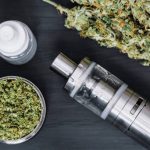The tobacco and vaping industries are constantly evolving, driven by consumer demand, regulatory changes, and innovative products. As smokers seek more affordable options, the market for cheap cigarettes remains robust. Simultaneously, the popularity of vaping continues to grow, with products like select vape devices gaining traction. This blog delves into the dynamics of the cheap cigarettes market and the rise of select vape products, examining the implications for consumers, retailers, and public health.
The Appeal of Cheap Cigarettes
Cheap cigarettes have long been a staple in the tobacco market, attracting price-sensitive smokers who seek affordable alternatives to premium brands. The appeal of cheap cigarettes lies in their lower price point, which can make smoking more accessible to a broader audience. However, the affordability of these products raises several important questions about quality, regulation, and health risks.
Price Sensitivity and Consumer Demand
Price sensitivity is a significant factor driving the demand for cheap cigarettes. High taxation and regulatory measures aimed at reducing smoking rates often result in higher prices for tobacco products. In response, many smokers turn to cheaper alternatives to maintain their habit without breaking the bank. The availability of cheap cigarettes provides an option for those who cannot afford or choose not to pay for premium brands.
Quality and Safety Concerns
While cheap cigarettes offer a more affordable option, concerns about their quality and safety are prevalent. These products may not always meet the same quality standards as more expensive brands, potentially posing greater health risks to consumers. Issues such as inconsistent tobacco blends, inadequate filtration, and the presence of harmful additives can exacerbate the dangers of smoking.
Regulatory Challenges
Regulating cheap cigarettes presents a unique set of challenges. Ensuring that these products comply with health and safety standards, including proper labeling and packaging, is crucial. Additionally, addressing the illicit trade of counterfeit and unregulated cheap cigarettes is essential to protect consumers and uphold public health objectives.
The Rise of Select Vape Products
As the tobacco industry evolves, vaping has emerged as a popular alternative to traditional smoking. Select vape products, in particular, have gained attention for their variety, customization options, and perceived lower health risks compared to conventional cigarettes. The rise of select vape products highlights the shifting landscape of nicotine consumption and the diverse preferences of modern consumers.
Variety and Customization
One of the key attractions of select vape products is the wide variety of flavors and customization options available. Vapers can choose from an extensive range of e-liquids, including fruit, dessert, menthol, and tobacco flavors. Additionally, select vape devices often offer adjustable settings for power, temperature, and airflow, allowing users to tailor their vaping experience to their preferences.
Perceived Health Benefits
Many consumers perceive vaping as a less harmful alternative to smoking. Select vape products, which typically involve heating e-liquids to produce vapor rather than burning tobacco, are thought to reduce exposure to harmful chemicals and carcinogens associated with combustion. While vaping is not without risks, it is generally considered to be less harmful than smoking traditional cigarettes.
Regulatory Landscape
The regulatory landscape for vaping products is still evolving. Governments around the world are grappling with how to balance the potential harm reduction benefits of vaping with the need to protect public health, particularly among young people. Regulations may include restrictions on marketing and advertising, age verification requirements, and standards for product safety and labeling.
Market Trends and Consumer Behavior
The interplay between cheap cigarettes and select vape products reflects broader trends in the tobacco and nicotine markets. Understanding these trends can provide insights into consumer behavior and inform strategies for addressing public health concerns.
Dual Use and Transition
Many smokers engage in dual use, meaning they smoke cigarettes while also using vape products. This behavior can be a step towards reducing or quitting smoking, as some smokers use vaping as a transitional tool. However, dual use also presents challenges, as it can maintain nicotine dependence and complicate efforts to measure the effectiveness of vaping as a smoking cessation aid.
Demographic Shifts
The demographics of nicotine consumers are shifting, with younger generations showing a preference for vaping over traditional smoking. This shift is influenced by factors such as the perceived novelty of vaping, the variety of flavors, and the perception of reduced harm. Understanding these demographic trends is crucial for policymakers and public health advocates seeking to address nicotine use among young people.
The Role of Technology
Technological advancements play a significant role in the development and appeal of select vape products. Innovations in device design, battery life, and e-liquid formulations enhance the user experience and attract a tech-savvy audience. Additionally, online platforms and social media have facilitated the growth of vaping communities, where users can share experiences, reviews, and recommendations.
Public Health Implications
The popularity of cheap cigarettes and select vape products has significant public health implications. Balancing the demand for these products with efforts to reduce smoking rates and prevent nicotine addiction is a complex challenge.
Harm Reduction Strategies
Harm reduction strategies aim to minimize the health risks associated with nicotine use. Vaping is often promoted as a harm reduction tool for smokers who are unable or unwilling to quit nicotine entirely. However, ensuring that vaping products are used as intended and not as a gateway to smoking is critical to the success of these strategies.
Youth Prevention
Preventing nicotine use among young people is a top priority for public health. The appeal of flavored vape products and the perceived lower risks of vaping have led to increased use among adolescents. Regulatory measures, such as flavor bans and age restrictions, are essential to curbing youth vaping and preventing nicotine addiction.
Comprehensive Approaches
Addressing the public health challenges posed by nicotine use requires comprehensive approaches that encompass both smoking and vaping. This includes ongoing public education campaigns, access to smoking cessation resources, and robust regulatory frameworks to ensure product safety and compliance.
Conclusion
The market for cheap cigarettes and select vape products reflects the evolving landscape of nicotine consumption. While cheap cigarettes offer an affordable option for smokers, concerns about quality and safety remain. On the other hand, select vape products provide a customizable and potentially less harmful alternative to traditional smoking. Balancing consumer demand with public health objectives will be essential as the tobacco and vaping industries continue to evolve.
Medical Disclaimer:
The information provided in these blog posts is intended for general informational and educational purposes only. It is not a substitute for professional medical advice, diagnosis, or treatment. Always seek the advice of your physician or other qualified healthcare provider with any questions you may have regarding a medical condition. The use of any information provided in these blog posts is solely at your own risk. The authors and the website do not recommend or endorse any specific products, treatments, or procedures mentioned. Reliance on any information in these blog posts is solely at your own discretion.
















